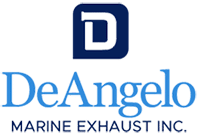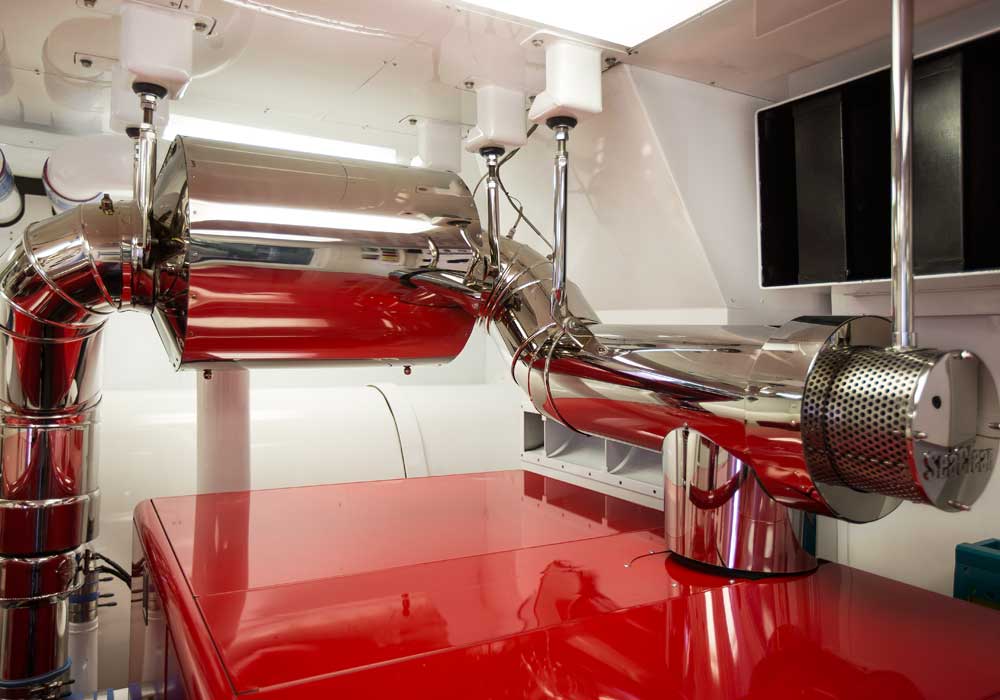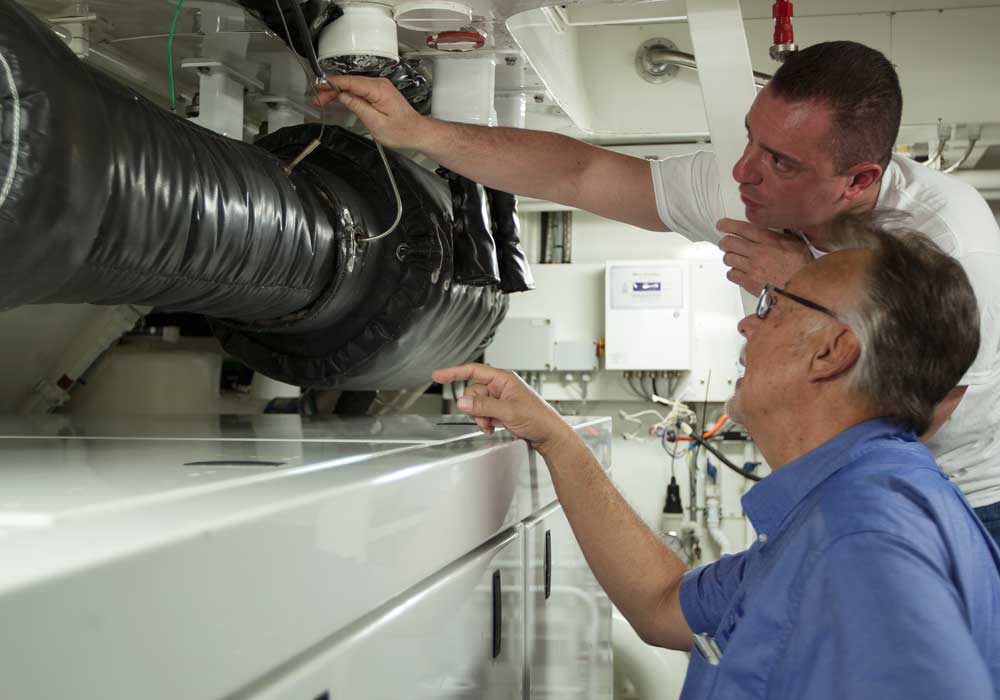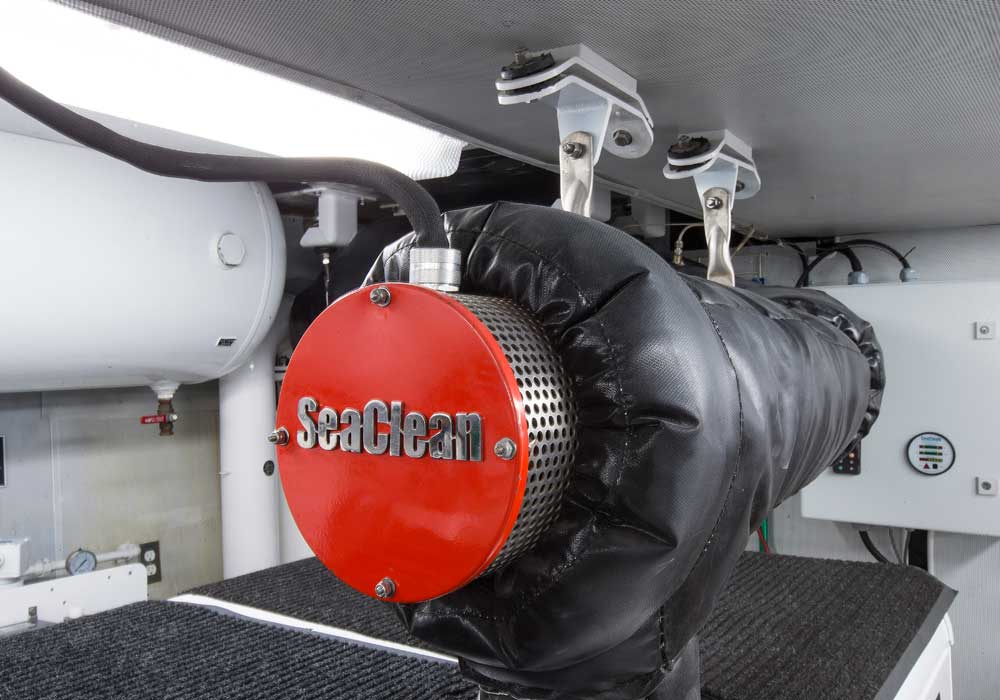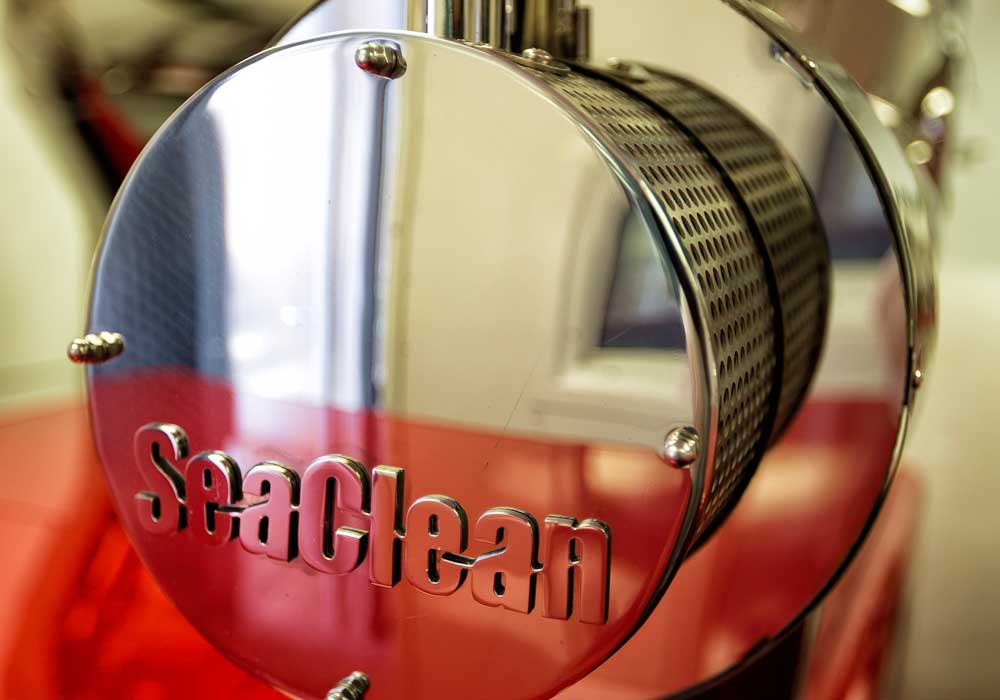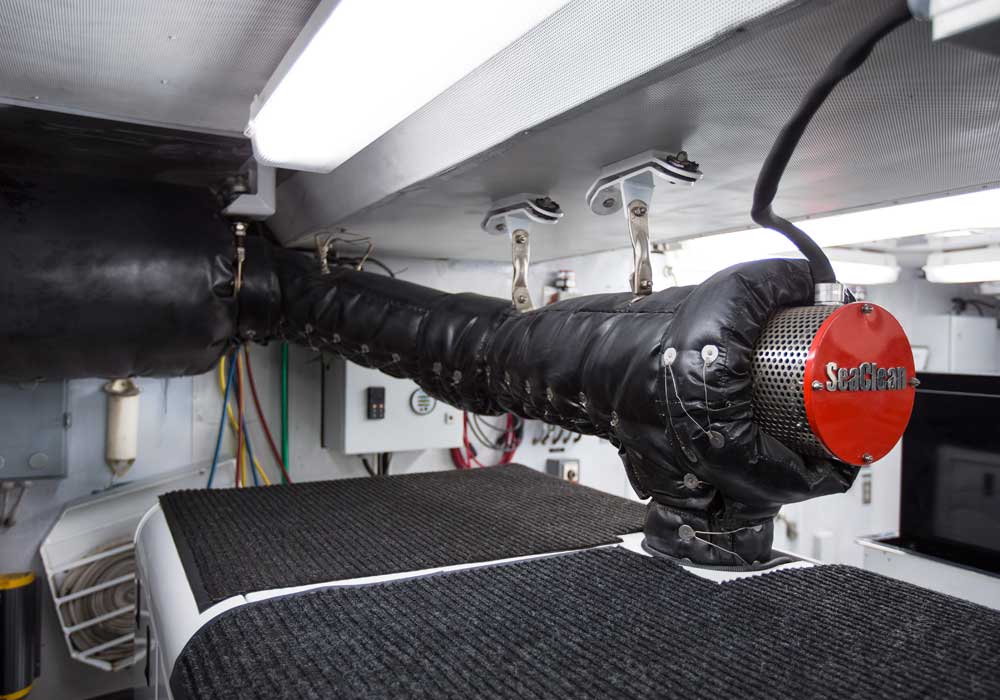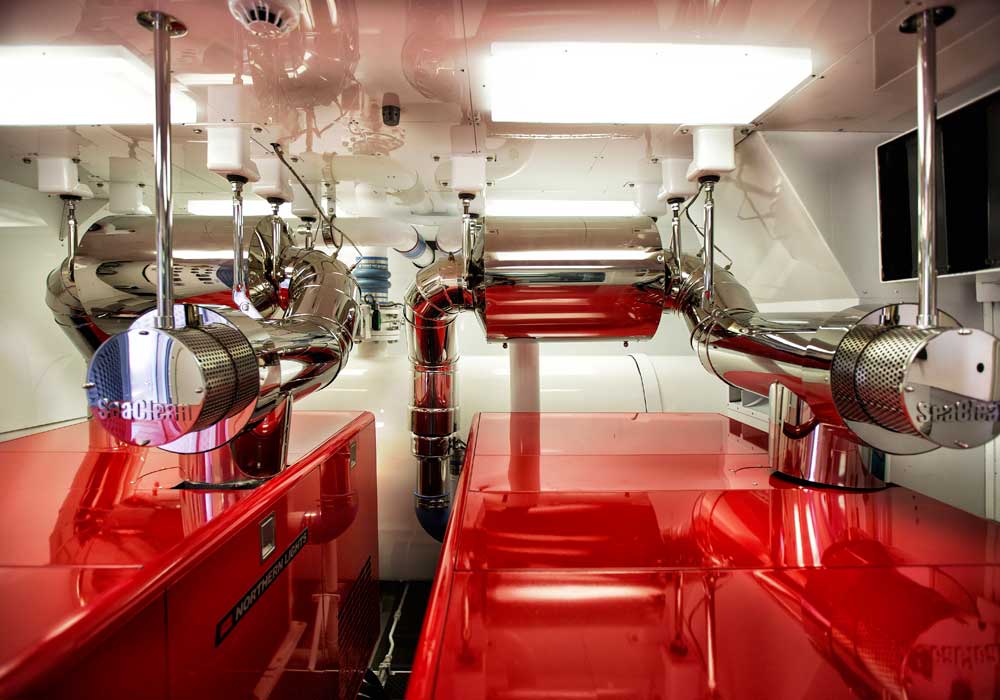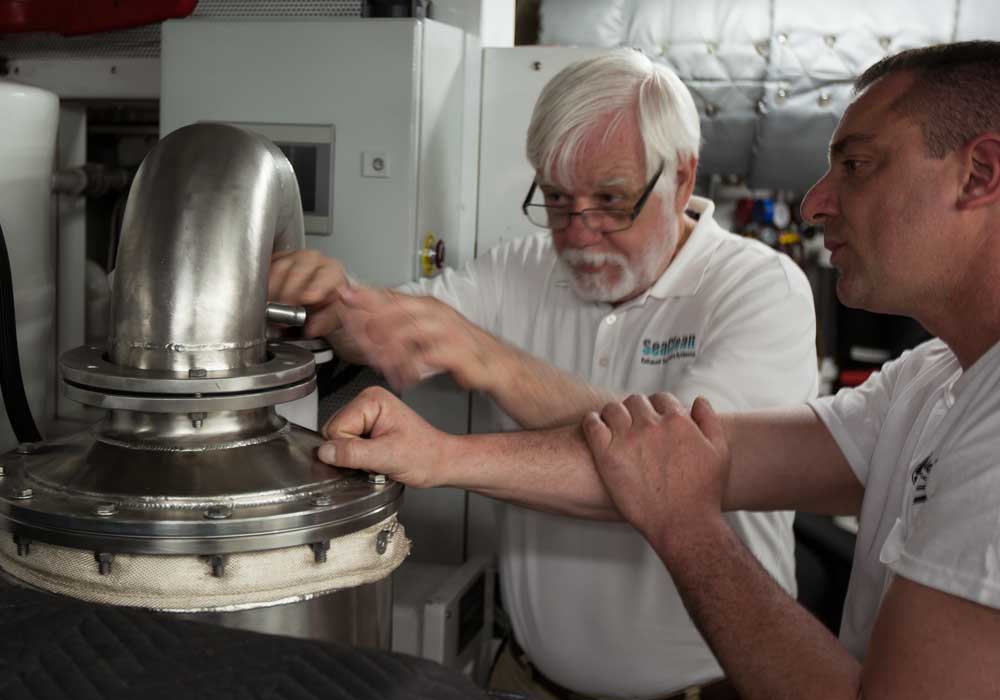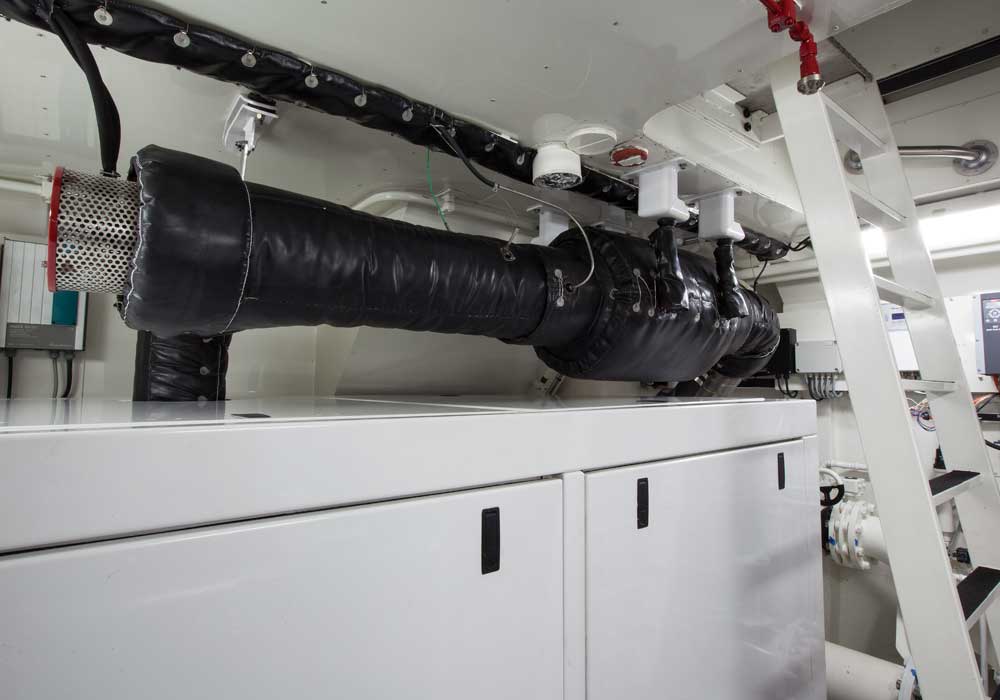Eliminate Soot, Discharge, Oily Residue. Minimize Hull & Abrasive Cleaning.
Talk about blowing smoke!… a few of the claims made by entrants to the marine diesel particulate filter market are not fact based, they are misrepresentations of what really takes place. Complete Article
Here are the FACTS about diesel particulate filter systems (DPF):
- “99%” reduction in soot production: Good filter performance in a range between 90 and 98 percent reduction in particulates. In real life, achievement of 99 percent reduction without producing high backpressure requires a very large, very heavy, and very expensive filter.
- “No heat generation”: Another claim that is not accurate. Regeneration, the removal by combustion of captured particulates, generates additional heat. Virtually all filters are coated with a catalyst which promotes the ignition of particulates at a temperature lower than their “self-ignition” temperature. The heat released by combustion of those particulates and unburned hydrocarbons (diesel fumes) raises the temperature of the filter and the exhaust gas above that at the filter inlet.
- Active vs. Passive Regeneration: Passive Regeneration is marginal at best. Exhaust gases entering a passive filter must be hot enough to start a chemical reaction between particulates and the filter catalyst. Many generators are capable of producing exhaust gas at a temperature high enough to initiate and maintain regeneration, but only when they are operated at a high percentage of load for long enough to complete the process.
SeaClean© is the first and only truly successful electrically heated active particulate filter system designed specifically for yacht service.
- Patented system
- Unique in operation. Unlike the competition, SeaClean ensures near constant regeneration across the widest range of generator output.
SeaClean® does not wait until exhaust backpressure rises to high levels before attempting to burn off accumulated soot. - Generator operation is smooth and constant due to a consistent level of low exhaust pressure. SeaClean’s control system allows it to act as a loadbank at low generator loads and smoothly tapers heater power to zero as the yacht’s electrical load increases.
- No power is wasted on regeneration when it is needed by the yacht’s own systems because the filter does not require periodic regeneration to relieve excessive exhaust back pressure.
- Many systems have been installed in which exhaust backpressure is at or near the same level as at commissioning thousands of hours earlier and have yet to require maintenance or cleaning.
A marine generator exhaust treatment system is a substantial investment, the marketability of a charter yacht, and the joy of surrounding the yacht with clean air and water. Carefully consider the options available and look very closely at the total cost of ownership over the life of the yacht and its resale value.
Then call DeAngelo Marine Exhaust for a realistic and honest evaluation of your options. Complete Article
![]()
Soot Filtration Systems for Marine Diesel Generators
Testimonials
What Captains, Engineers & Owners Are Saying About the SeaClean SystemCaptain Ken Bracewell
The exhaust gas is extremely clean, and nearly odorless. The topsides remain free of soot; saving the crew countless hours of cleaning …
Frequently Asked Questions
Is the System Approved by Class??Answer in Brief
If so specified, after fabrication, installation and commissioning is complete, a Class surveyor will inspect and approve the installation.
